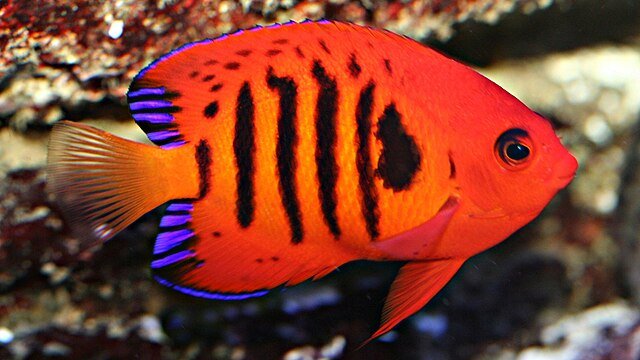By Sarah Couture*
We are surrounded by chemicals that improve our everyday lives. Soaps and shampoos are chemically designed to be nice and foamy. Detergents are engineered to eradicate dirt in laundry. Flame retardants are added to plastics and cuddly toys to minimize the risks of them catching fire. While such advancements improve our lives, these chemical compounds are making their way into the oceans, raising questions about their long-term impact on the environment and on the seafood we eat.
Waste management and water treatment infrastructure globally is still insufficient, and many facilities are not able to keep up with new chemicals. With each emerging contaminant discharged into the environment, on-going research is needed to assess their potential impact on marine ecosystems and seafood. To address this knowledge gap, the IAEA, through its Environment Laboratories, examines how contaminants such as surfactants and flame retardants are transported through the marine environment and whether they affect or bioaccumulate in important marine species.
“The IAEA works with Member States to improve the understanding of our impact on the ocean,” said David Osborn, Director of the IAEA Environment Laboratories. “We rely on the oceans for the air we breathe, the food we eat, and so much more. It is in our best interest to look after them.”
Researchers at the IAEA used radiotracers to monitor the movement of surfactants in seabream, a common staple in people’s diets around the world. Results showed that, while levels of linear alkylbenzene sulfonates, surfactants frequently used in shampoos and soap, rose in seabream in contact with the chemical, these went down rapidly. It suggests these particular surfactants were not assimilated by the tested marine organisms. Considering the myriad of different surfactants used in cosmetics, detergents, soaps etc, more research is needed to see how different types react in different marine organisms and whether they affect the safety of the fish we eat.
The IAEA Environment Laboratories are also addressing another growing concern around the world: plastic pollution. While large floating plastic debris are visible, there are increasing questions regarding the fate of these plastics as they break down into microplastics, as well as any potential impacts of the chemicals of which the plastics themselves are made. To advance the global understanding of the situation and any potential risks, the IAEA Environment Laboratories in Monaco are examining these various questions. Initial research has shown for example that some of the chemicals from the plastics leach out, or dissolve, into the ocean. One of the studies looked at flame retardants, components used to prevent plastics from catching fire, such as hexabromocyclododecane (HBCDD). Polystyrene containing HBCDD is used in building materials and fragments are often found in the sea. Some chemicals, including HBCDD, leach from the polystyrene into the seawater over long periods of time. HBCDD is highly persistent in the environment, is toxic and bioaccumulates in marine organisms, and as such was added to the Stockholm Convention list of Persistent Organic Pollutants (POPs) in 2013.
Research conducted by the IAEA Environment Laboratories in collaboration with the Monaco Scientific Centre (Centre Scientifique de Monaco) tested the impact of exposure to polystyrene on corals. Results showed leached brominated flame retardants are readily bioaccumulated by corals, with a relatively slow depuration. Although no significant effects on the corals’ photosynthetic activity were observed during short-term exposure to a polystyrene mix, there was some polyp retraction. In addition, corals exposed to the brominated flame retardant alone were not as affected as those exposed to the polystyrene sample, which shows other chemicals in the polystyrene or the micro plastic polystyrene particles themselves were also impacting the corals. In the long term, pollution-induced polyp retraction can have implications for the coral’s health, especially considering the chronic exposure of marine organisms to the increasing flow of plastic debris and other pollutants. More research is needed in order to examine other factors which impact the release of chemicals such as the size and density of the plastic fragments, as well as the temperature of the sea water for example. Especially as polystyrene and other waste can release chemicals in remote areas as they are carried by the wind and currents.
The IAEA Environment Laboratories are unique within the United Nations system as they are the only UN scientific research laboratories dedicated to the study of the marine environment. The IAEA works with Member States to address their environment-related priorities and ensure they can use and enjoy the oceans in a lasting and sustainable manner. This includes conducting research and developing methods to address emerging contaminants, as well as training scientists from Member States.
Stay Always Informed
Join our communities to instantly receive the most important news, reports, and analysis from the aquaculture industry.
Reference:
Marc Metian, Florent Renaud, François Oberhänsli, Jean-Louis Teyssié, Ali Temara, Michel Warnau. Biokinetics of the anionic surfactant linear alkylbenzene sulfonate (LAS) in the marine fish Sparus aurata: Investigation via seawater and food exposure pathways. Aquatic Toxicology, Volume 216, November 2019, 105316. https://doi.org/10.1016/j.aquatox.2019.105316 https://www.sciencedirect.com/science/article/abs/pii/S0166445X1930459X
* IAEA Department of Nuclear Sciences and Applications
Source: IAEA
Editor at the digital magazine AquaHoy. He holds a degree in Aquaculture Biology from the National University of Santa (UNS) and a Master’s degree in Science and Innovation Management from the Polytechnic University of Valencia, with postgraduate diplomas in Business Innovation and Innovation Management. He possesses extensive experience in the aquaculture and fisheries sector, having led the Fisheries Innovation Unit of the National Program for Innovation in Fisheries and Aquaculture (PNIPA). He has served as a senior consultant in technology watch, an innovation project formulator and advisor, and a lecturer at UNS. He is a member of the Peruvian College of Biologists and was recognized by the World Aquaculture Society (WAS) in 2016 for his contribution to aquaculture.




